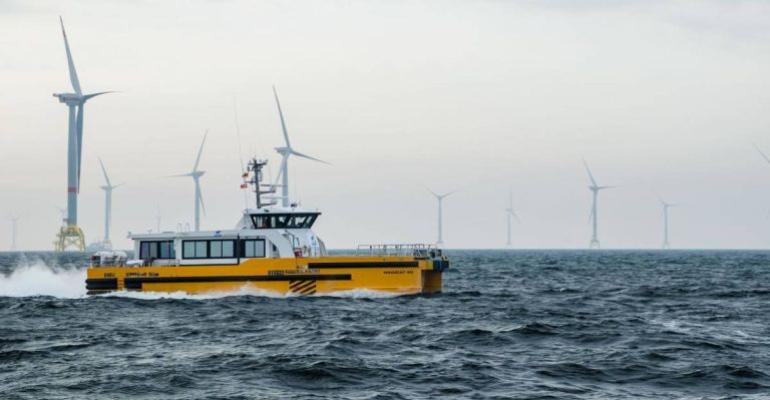Ship operators in the rapidly expanding offshore wind sector are likely to see capital investment worth $28-145 billion over the period depending on the scope of work, according to a new report from Intelatus Global Partners, requiring a large number of service ships that do not exist today. Vessel scopes of work range from pure transport and installation units to full floater engineering, procurement, construction and installation.
Offshore wind development between now and 2035 will require the pre-lay of more than 6,000 mooring spreads and the hook-up of about 5,400 turbines, Intelatus estimates. The main category of ships needed for this will be anchor handlers, but the firm’s analysts reveal that of today’s fleet of about 2,400 anchor handlers, only about 50 ships are suitable for floating wind projects.
Even so, many of these lack one or two of the key technical attributes that will be required for commercial scale wind farms. This includes the ability to store and handle sufficient chain capacity, for example. Meanwhile, buoyant oil and gas activity is reducing the supply of suitable ships.
Philip Lewis, the consultancy’s director of research, tells Seatrade Maritime News that first generation anchor handlers were designed to service drilling rigs and are mostly not optimal to work efficiently in the wind sector. He cites Maersk Supply Service’s M-class vessels as potentially suitable. These DP2 ships have bollard pulls of at least 250 tonnes and workable deck space of 800 sq m or more.
Competition for suitable service vessels in both the oil and gas and floating wind segments is such that newbuildings can now be discussed. This comes at a time when several designs are emerging for anchor handlers specifically designed for commercial scale floating wind.
“We forecast a vessel building opportunity amounting to as much as $12 billion in the short to medium term,” Intelatus said.
Copyright © 2024. All rights reserved. Seatrade, a trading name of Informa Markets (UK) Limited.
Add Seatrade Maritime News to your Google News feed.  |

